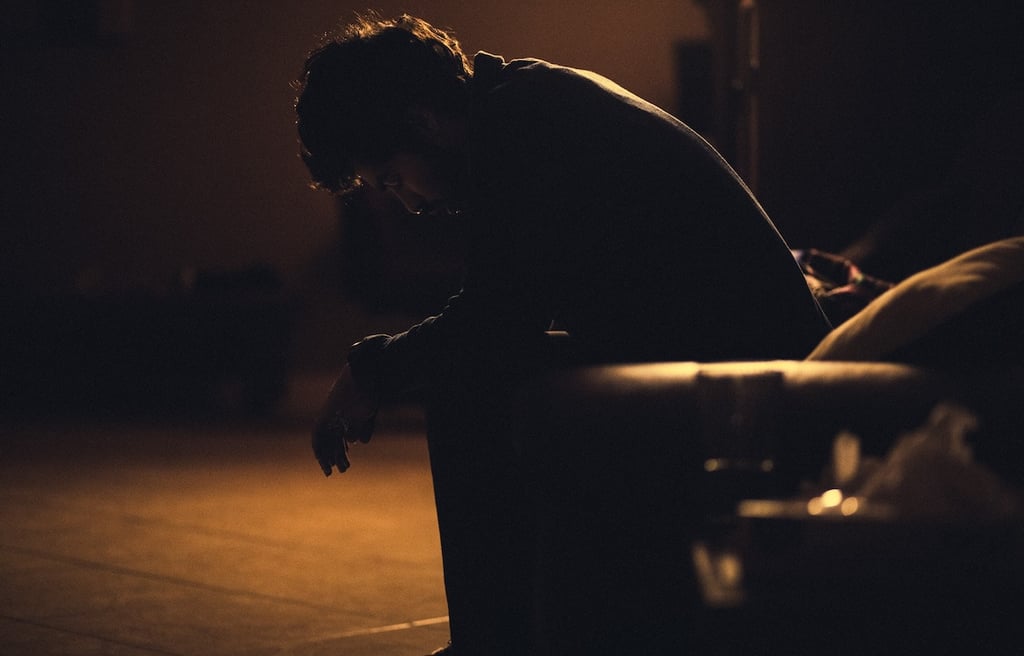DEPRESSION AND PAIN
Depression and pain are two distinct yet intricately interconnected phenomena that affect millions of people worldwide.
While depression is often associated with emotional distress and a profound sense of hopelessness and helplessness, pain manifests as a physical sensation that can range from mild discomfort to debilitating agony.
Depression and pain


Perhaps not very surprisingly, these two experiences frequently coexist, creating a complex and challenging situation for those who suffer from both conditions simultaneously. This article delves into the intricate relationship between depression and pain, exploring the causes, manifestations, and potential treatment approaches for individuals grappling with these dual burdens.
The Physiology of Pain and Depression
To comprehend the connection between depression and pain, it is essential to look into the underlying physiological mechanisms of both conditions. Pain, a signal that something is wrong within the body, involves intricate interactions between pain receptors (or nociceptors), nerve cells, neurotransmitters and various regions of the brain. Similarly, depression is linked to imbalances in neurotransmitters like serotonin and norepinephrine, affecting mood regulation and emotional well-being.
Research suggests that these imbalances in neurotransmitters can contribute to a heightened perception of pain (i.e. if you are depressed, you are likely to feel the pain more). On the other hand, additionally, chronic pain can lead to changes in the brain's structure and function, amplifying feelings of despair and sadness (i.e. making the depression worse). Overlapping neural pathways further intensify this relationship, creating a cycle where pain exacerbates depression, and depression, in turn, heightens the experience of pain.
Types of Pain Associated with Depression
The pain experienced by individuals with depression can manifest in various forms, including headaches, back pain, muscle aches and gastrointestinal discomfort. Moreover, conditions like fibromyalgia and irritable bowel syndrome are often accompanied by both depressive symptoms and chronic pain. These overlapping symptoms not only worsen physical health but also significantly impact mental and emotional well-being.
Psychological Factors and the Pain-Depression Nexus
Psychological factors such as stress, anxiety and trauma can exacerbate both depression and pain. Individuals dealing with chronic pain often experience a diminished quality of life, leading to feelings of helplessness and isolation. These negative emotions can intensify depressive symptoms, creating a vicious cycle where pain and depression reinforce each other.
Moreover, the constant battle with pain can erode one's resilience, making it challenging to cope with the emotional toll of depression. Conversely, the emotional distress of depression can lower pain thresholds, making even minor discomfort feel overwhelming. This interplay highlights the importance of addressing the psychological aspects of both conditions in any comprehensive treatment plan.
Treatment Approaches
Managing the intertwined experiences of depression and pain requires a multifaceted approach that addresses both the physical and emotional aspects of these conditions. Here are some strategies that individuals and healthcare professionals often explore:
Medication: Antidepressants that target specific neurotransmitters can help alleviate both depressive symptoms and chronic pain. If you are given antidepressants to deal with your pain, don’t just dismiss them, just because you don’t feel depressed. Some of these types of medication can help reduce the intensity at which nerve cells fire, and therefore reduce the amount of pain you feel. Additionally, pain relievers and anti-inflammatory medications may be prescribed to manage physical discomfort; once this has reduced, it can have a positive effect on one’s mental health and, in particular, depression and anxiety. Of course, medication is usually not free of side effects, and soem people may prefer to try other approaches, rather than taking tablets.
Therapy: Cognitive-Behavioural Therapy (CBT) and mindfulness-based interventions have shown effectiveness in managing both depression and chronic pain. Therapy can help individuals identify negative thought patterns, develop coping strategies and improve overall emotional well-being. Whether on its own, or together with other approaches, this can be a very effective way of dealing with both conditions.
Physical Therapy and Exercise: Physical therapy can address underlying musculoskeletal issues contributing to pain. Of course, it is important to make sure that the exercise carried out will not further damage your muscles or joints, thus making pain worse (if in doubt, discus it with your physiotherapist or other health professional). Generally speaking, regular exercise not only promotes physical health but also triggers the release of endorphins, which act as natural painkillers and mood enhancers.
Electronic devices: In the ever evolving world of technology, new devices keep being developed to help us deal with stress, anxiety, depression, pain, etc. For instance, micro-current devices such as Alpha-Stim can help reduce anxiety and depression. Equally, audio visual entrainment (AVE) devices can also have a positive effect in our holistic wellbeing.
Mind-Body Practices: Techniques such as yoga, meditation and acupuncture can help individuals manage pain by stretching your muscles, promoting relaxation, reducing muscle tension and improving overall mental health. If you are not familiar with yoga and meditation, we would recommend that you approach somebody who is experienced and can support you through learning and making sure that you are not overdoing things and making matters worse. Equally, if you want to trial acupuncture, make sure that you deal with a qualified professional, experienced in the field.
Supportive Relationships: Building a strong support network of friends, family and mental health professionals can provide emotional comfort and encouragement, easing the burden of both pain and depression. Although being part of large groups may not be everybody’s cup of tea, it is important to remain in contact with those closest to you. And if you feel lonely and isolated, perhaps getting in contact with others may help ease that burden, resulting in a positive effect to your mental and physical health in the medium to long term.
Lifestyle Modifications: Adopting a healthy lifestyle, including proper nutrition, regular sleep and stress management techniques, can positively impact both mental and physical well-being. Our lives often fall gradually into bad habits that have a negative impact in our lives. Often, we don’t notice those changes until much later on and may not make the link between them and our current situation. Small, beneficial changes, can have that positive impact that our bodies and minds need.
The relationship between depression and pain is complex and multifaceted, posing significant challenges for those who experience both conditions simultaneously. Understanding the interplay between these phenomena is crucial for developing effective treatment strategies that address both the physical and emotional aspects of pain and depression.
By adopting a holistic approach that combines medical interventions, therapy, lifestyle modifications, and social support, individuals can regain control over their lives, managing both depression and pain more effectively. As research continues to unravel the intricacies of this relationship, new and innovative treatments may emerge, offering hope to those living with the dual burden of depression and pain
SUBSCRIBE
Subscribe for updates on latest posts and to follow what is happening in the home of Target Pain.


